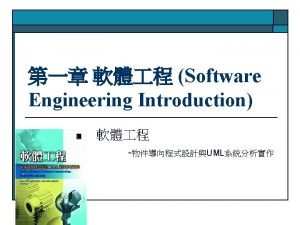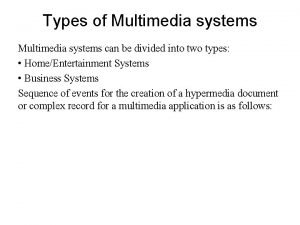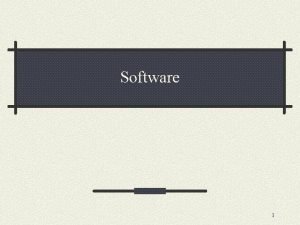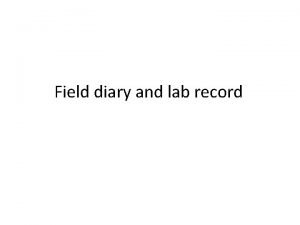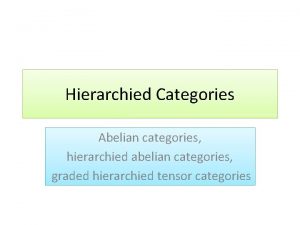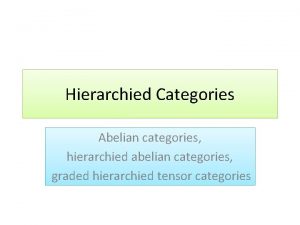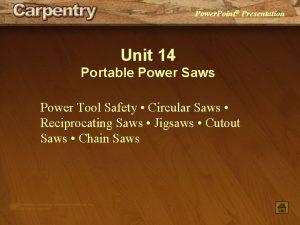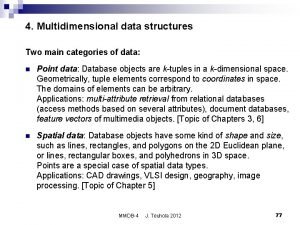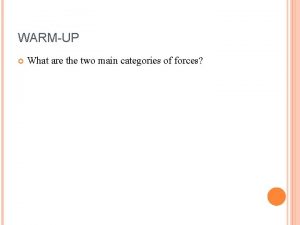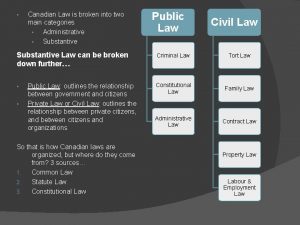POWER SAWS Two main categories of power saws





















- Slides: 21

POWER SAWS • Two main categories of power saws: Portable & Stationary. • Work is fed into a stationary saw. • Saws that are fed into the work are portable. • Smaller tables saws that may be transported to the job site are still considered stationary because work is fed into it. • Common portable saws are the Saber Saw & the Circular Saw.

Saber Saws • Used for straight or curved cuts. • Can cut internal or external radius cuts • Most have a base that can be tilted to make angled cuts. • Can accept a wide variety of blades to cut various materials. • Blades may be fast-coarse cut or smooth slow cut. • Can

Saber Saw Cont. • Saber saws can perform an operation called a plunge cut. • It has the ability to plunge into solid lumber to cut out interior dimensions. • The following illustrations show this procedure. Tilt base to Start cut. Slowly engage Blade into work piece Continue cut Following Layout line.

Circular Saws • Used for rapid cross cutting or ripping of large stock. • Available in a number of blade sizes from 4 ½ to 12 inch diameter blades. • Newer saws are equipped with blade brakes. • Can have a number of attachments such as a rip fence which allows you to rip to width long stock. • Many blade styles available for different work requirements.

Tips for Circular Saw Use 1. Make sure stock is supported and clamped securely. 2. Start saw with blade about ½ inch away from stock. 3. Follow your layout line making a straight cut: (binding the blade is caused by not following a straight line or sawing to fast) 4. Reduce forward speed at end of cut to reduce tear out or splintering. 5. When dealing with large stock such as plywood, have an assistant hold stock so as not to fall and bind the blade.

Stationary Saws • 1. 2. 3. 4. Four basic types of stationary saws found in most wood shops. Scroll Saw or jig saw Band Saw Radial Arm Saw Table saw

Scroll Saw • • Used to cut curves in thin stock. Are light duty machines which perform same operations as the coping saw. • Available in three basic designs. 1. Fixed or rigid arm 2. C-frame constant tension 3. Parallel arm constant tension • All cut with a reciprocating motion (blade moves up and down) • All cut on the down stroke. • Maximum length of stock that can be cut is equal to the distance from the blade to the back of the arm (throat).

Fixed Arm Scroll Saw Cuts stock to about 1 inch thick.

• Constant tension saws can cut stock up to two inches thick. • Blades tend to break less. • A variety of blades can be used including blades that cut 360 degrees. • Most blades are 5 inches long • Teeth of the blade must point towards the table when installed. • Pressure foot should always be placed snugly against the stock. • Do not let the blade rub against the foot. • Use relief cuts when possible to avoid binding the blade. C-Frame Parallel Frame

Bandsaws • Used to make straight or curved cuts. • Can cut many types of materials. • Size of saw is determined by the diameter of the wheels which is also the max size board which can be cut. • 14 inch saws are a popular size. • Blade widths are available from 1/8 to 1 inch for a 14 inch saw. • Blades come in many styles and tooth configurations depending on the material being cut and the finish desired. • Do not cut a radius smaller than the blade size can handle.

Blade width selection for desired Radius to be cut

Table Saw • Used for ripping, cross cutting, dado cuts, miter cuts, rabbets & bevels. • Size is determined by the size of the blade which can be safely used on saw. • Saws come equipped with blade guards and small fingers called antikickbacks which prevent wood from kicking back towards the operator. • A Fence is used to accurately rip (cut with the grain) stock. • A Miter Gauge is used to aid in crosscutting stock. • Fence and Miter gauge should not be used at the same time without use of a clearance block.

Blade guard Table Miter gauge Fence Blade Angle Adjustment Wheel Power Switch Blade Height Adjustment Wheel

Saw Blades • • 1. 2. 3. 4. Many different types of blades can be used on a table saw. The most common are: Crosscut – teeth are similar to handsaw crosscut teeth – used to cut across the grain. Rip Blade – teeth are similar to hand ripsaw – used to cut with the grain. Combination Blade – has both cross and rip teeth – used for all purpose work. Some are Hollow ground with the blade thicker near the teeth allowing for clearance in the saw kerf.

Other Blade Types • Special blades are available for cutting plywood, plastic & laminates. • Carbide tipped blades are available for most cutting applications. – They cut cleaner and faster than other blades. – They are harder and more wear resistant than other blades. – Downside is that they cost much more. – They require special sharpening equipment when they become dull.

Rip Dado Plastic General Purpose

Power Miter Saws • Also called chop saws. • Used to cut accurate cross cuts or miter joints at any angle from 0 to 45 degrees. • Three basic types: – Miter – Compound Slide Miter Blades are usually of the crosscut type since The cut is normally across the grain.

Cuts regular miters 0 to 45 degrees

Table swivels left to right to cut angles 0 to 45 degrees. Head also tilts left to Right in order to cut compound angles.

Performs same operation As compound miter with The addition of a Slide that allows Longer cuts On wider Boards. Slide Mechanism Lock nut for adjusting Tilt left to right.

Radial Arm Saw • Used for accurate cross cutting at any angle. • Can be used for dado cuts, lap joints, and molding cuts. • Compound miter cuts can also be made.
 Two main software categories
Two main software categories What are the two main categories of ecosystems?
What are the two main categories of ecosystems? Https://lms-ca.calsaws.net
Https://lms-ca.calsaws.net What is cal saws
What is cal saws Cal saws
Cal saws Cal saws
Cal saws System and application software
System and application software Main categories of software
Main categories of software A material's ability to allow heat to flow is called _____.
A material's ability to allow heat to flow is called _____. Hinge tools classification
Hinge tools classification Classification of multimedia
Classification of multimedia Software is divided into two categories
Software is divided into two categories Importance of field diary slideshare
Importance of field diary slideshare Solicited external proposal
Solicited external proposal Transmission medias
Transmission medias Due process definition law
Due process definition law Power triangle
Power triangle The future will
The future will Tells more about the main idea
Tells more about the main idea Void main int main
Void main int main Two main clauses
Two main clauses Types of main idea
Types of main idea







